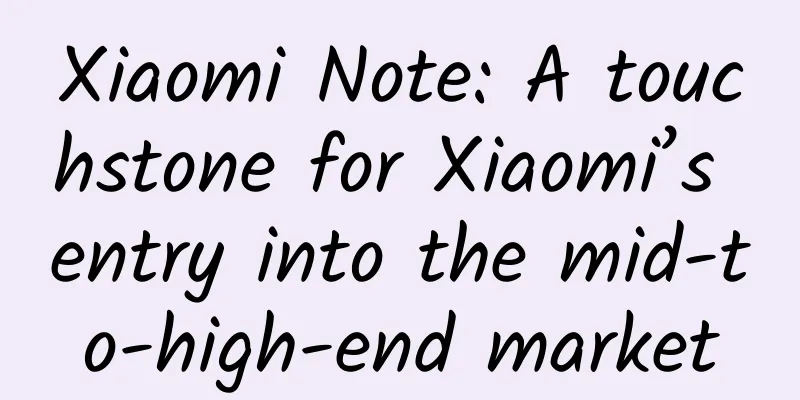Giants are accelerating their layout in Southeast Asia, becoming the next battlefield for Chinese technology companies

|
In recent years, a wave of Chinese investment has swept Southeast Asia. The Chinese government recently announced the "Belt and Road" initiative, which will invest heavily in the Southeast Asian ecosystem. In addition to the government, Chinese technology companies are also finding that the local market is too competitive and are beginning to shift their attention to Southeast Asia, where the market may be more fragmented. Southeast Asia has a population of over 600 million and a large number of Mandarin speakers, and may be the next battlefield for Chinese technology companies. The recent situation in the technology finance/e-commerce field has been very interesting in the past few months. Just recently, Alibaba invested another $1 billion in Southeast Asian e-commerce platform Lazada, just one year after the last investment of the first $1 billion. Alibaba's investment in Lazada has seized the beachhead, and Chinese Internet giants have set out to expand their influence in the Southeast Asian technology community. In recent years, a wave of investment from China has swept Southeast Asia. The Chinese government recently announced the "Belt and Road" initiative, which will invest heavily in the Southeast Asian ecosystem. In addition to the government, based on the current situation of too fierce competition in the domestic market, Chinese technology companies have also begun to shift their attention to Southeast Asia, where the market may be more fragmented. Southeast Asia has a population of over 600 million and a large number of Mandarin speakers, and may be the next battlefield for Chinese technology companies to compete. Starting from scratch Earlier, some Chinese high-tech companies have begun to try to enter the Southeast Asian market from scratch. For example, in early 2015, JD.com expanded into Indonesia by setting up its own JD.id (JD.com subdomain website). The platform came into being amid fierce competition from local Indonesian companies such as Tokopedia and Bukalapak. Although the final result is still unclear, it can be concluded that this road will be difficult. Because the Southeast Asian market is much more fragmented than that of China. Although organic overseas physical expansion helps to protect corporate culture, it takes too long. In the technology industry, it is unforgivable to miss the opportunity to seize market share at the beginning. Competitors will soon appear and ruthlessly grab market share. Therefore, rather than developing their own overseas business from scratch, it will be more beneficial for these technology giants to invest directly in already fast-growing Southeast Asian technology companies, which will also reduce the operational/management problems of new subsidiaries. Through mergers and acquisitions, these technology companies will also gain a wealth of talent, saving a lot of time for training and construction. The Romance of the Three Kingdoms - BAT China's influence on the Southeast Asian technology market is growing exponentially. Earlier reports said Alibaba was considering an investment in Grab, a Singapore-based ride-hailing app. If this were to happen, it would likely be the largest investment activity in Southeast Asia. In addition to Lazada and potentially Grab, Alibaba has also made a number of investment/acquisition activities in other countries, including Thailand's mobile payment provider Ascend Money, Philippines' digital payment provider Mynt, and Singapore's multi-currency trading startup M-DAQ. In early April, Alibaba announced that it would partner with Emtek to jointly launch new mobile payment products and other financial services; this partnership could subsequently lead to Alibaba's investment in Bukalapak, another Indonesian e-commerce giant. In 2015, Alibaba signed an agreement with Doku, Indonesia's largest online payment provider, to fast-track and simplify payments for Indonesian customers. The investment in Lazada also gave Alibaba control of Southeast Asia's payment platform HelloPay. In 2017, HelloPay merged with Alipay, allowing Alipay to expand into the Southeast Asian region. In addition to Alibaba, Tencent has also entered the Southeast Asian market. Sea, a Singapore-based platform provider backed by Tencent, is preparing to go public, with an expected IPO to fetch $1 billion. With the fresh injection of funds from Tencent, Sea has also accelerated Shopee's expansion plans in Southeast Asia. Bloomberg reported, citing Sea's data, that Shopee's annual gross merchandise value (GMV) has now exceeded $3 billion. Tencent also recently invested $1.2 billion in Go-jek, an Indonesian ride-hailing app. In addition, Tencent has established a cooperative investment with Ookbee, a digital entertainment platform based in Thailand, which has more than 8 million users and 4 million monthly active users in Thailand, Malaysia, Indonesia, the Philippines and Vietnam. In addition to the BAT three giants, JD.com is also in talks to make a major investment in Tokopedia. Incidentally, Tencent is JD.com's largest shareholder, with a stake of 21.25%, even more than JD.com's founder. It is rumored that this investment may be worth hundreds of millions of dollars, which is much less than Alibaba's investment, but it is still important for Southeast Asia. Trust China, a Hong Kong-listed financial technology company, also announced that it will establish a Southeast Asian headquarters in 2017 to accelerate the expansion of its overseas financing business. There are also reports that they may seek to cooperate with local companies to expand their business. Conclusion The Southeast Asian ecosystem is following the path that China took a decade ago - with rising internet and mobile penetration. In this way, Southeast Asian companies can leverage the expertise and know-how of Chinese companies in different fields such as cloud computing, big data analysis, credit risk assessment, mobile payments and logistics. I remember when I returned to Singapore after working in China for a few years, I felt that Singapore's payment methods were far behind those in China. Although Chinese expertise can help many startups learn faster, Chinese technology companies should not take a one-size-fits-all approach to copying the operating manual. Although Southeast Asian companies are smaller than Alibaba, the market is more fragmented. The wise move is to first work with local venture capital firms to identify truly promising companies, and then propose cooperation or even investment. The recent investment activities of several Chinese technology companies are just the beginning. I have also chatted with several foundations from China (outside BAT) recently; they have also visited Singapore and are looking for opportunities to cooperate with successful local companies. Sino-foreign cooperation will eventually become the new normal. The Southeast Asian technology market is still a blue ocean, full of opportunities, but also many uncertainties. Deng Xiaoping once said, "Cross the river by feeling the stones." Chinese high-tech companies should continue to move forward, but in uncertain situations, they should grope their way forward cautiously. As a winner of Toutiao's Qingyun Plan and Baijiahao's Bai+ Plan, the 2019 Baidu Digital Author of the Year, the Baijiahao's Most Popular Author in the Technology Field, the 2019 Sogou Technology and Culture Author, and the 2021 Baijiahao Quarterly Influential Creator, he has won many awards, including the 2013 Sohu Best Industry Media Person, the 2015 China New Media Entrepreneurship Competition Beijing Third Place, the 2015 Guangmang Experience Award, the 2015 China New Media Entrepreneurship Competition Finals Third Place, and the 2018 Baidu Dynamic Annual Powerful Celebrity. |
<<: Geely withdraws from CHS, subsidies are stopped, will China's hybrid cars be in decline?
Recommend
Foreign dramas after the "foreign restriction order": piracy breeds copyright fee differentiation
The Korean drama "Hyde, Jekyll, Me", th...
WeChat users have reached 1.26 billion! QQ continues to fall sharply
Tencent released its third-quarter 2021 financial...
A young man born in the 2000s lost 10 pounds after an injection, and the doctor gave an urgent warning
Everyone loves beauty, but we should also pay att...
WeChat 8.0 is awesome! But it's fatter
[[377737]] On January 21, 2021, WeChat celebrated...
Microsoft wants everyone to happily forget Windows 8
When Microsoft starts building the next generation...
On the second day of the first lunar month, welcome the son-in-law and bring good fortune. Do these 5 things and your home will be filled with joy!
The second day of the first lunar month is the da...
Taking Tencent Game Manager as an example, let’s talk about user growth
This article takes " Tencent Game Manager&qu...
How to write promotional ideas, write like this!
Why does my ad not have any traffic even though i...
The myriad of things inside the nucleus: mysterious and fascinating nuclear isomers
It has been more than 100 years since nuclear iso...
How to use Xiaohongshu to accurately attract traffic?
Traffic generation has always been the beginning....
Data can still be recovered after clearing. Changing your phone is more terrible than losing it.
Smartphones are becoming more and more powerful. B...
Are there ancient monuments in the "cloud"? Put on technological "armor" for Beijing's central axis!
The Beijing Central Axis is like a link that trav...
How should SEM bidders deal with the setbacks they may encounter in their work?
As an SEM person, you will encounter various prob...
Smart autumn harvest | Identify compound fertilizers and distinguish true from false at the speed of light
Produced by: Science Popularization China Author:...









